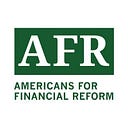GAO Report Confirms Opportunity Zones Program Ripe to Be Exploited by Wealthy Taxpayers

A new report by the Government Accountability Office (GAO) confirms several conclusions in AFR’s analysis of the Opportunity Zones (O-Zone) tax break. The 2017 Republican tax cut legislation included the O-Zone tax giveaway for real estate tycoons masquerading as economic development for low-income neighborhoods. It was poorly designed and badly implemented and mainly has “ended up showering benefits on wealthy developers,” as Paul Krugman recently put it. This week the House Ways & Means Committee is holding a hearing scrutinizing the O-Zone tax break that should shed needed light on this giveaway to real estate investors and “who it left behind.”
The O-Zone tax break entirely eliminates capital gains taxes on investments in designated O-Zone neighborhoods held for 10 years, a giveaway which AFR estimated could be worth $26 billion. It has created a huge incentive for investments in gentrifying areas that are likely to drive up housing costs for people of color and low- and moderate-income people living in the designated O-zone areas, and exacerbate the affordable housing crisis.
The O-Zone tax break creates added incentives to build luxury apartments and condos, which will raise rents and displace the people living in the designated neighborhoods — primarily lower-income Black and Latinx families that are simultaneously facing an eviction crisis as the pandemic safeguards expire. The GAO report failed to directly examine the threat to affordable housing in communities of color, but there are a number of key takeaways from the report that should raise red flags.
1) Almost all the O-Zone investments are real estate not permanent job-creating businesses: The O-Zone tax break cheerleaders promised it would create jobs in low-income areas, but the GAO report found that “nearly all” (90 percent) of the investments are real estate projects like hotels and apartment buildings.
2) Most of the real estate projects would have happened even without the tax break: The idea behind the O-Zone tax break was that it would encourage new investments, but investors told the GAO that “they would have made the same investments without the incentive.” That makes the tax break the cherry on top of investment projects that would likely happened anyways — a $26 billion giveaway without increasing investment.
3) Flawed structure and disclosure hinders oversight and evaluation: The GAO reported that “there are insufficient data available to evaluate” how the tax break is impacting neighborhoods and the lack of transparency makes it difficult for the IRS to make sure that the “high-risk” super-rich O-Zone investors don’t improperly access the tax break
The O-Zone tax break is a windfall tax giveaway for rich developers and should be repealed. The GAO report confirms many of our concerns and predictions but the worst impacts are still unfolding — even the earliest investments are still under construction. As the luxury high-rises go up, so will neighborhood housing costs, putting added pressure on the families that already live in these Black and Latinx neighborhoods.
Americans for Financial Reform is a nonpartisan coalition of over 200 organizations fighting for a safer and fairer financial system. To receive regular emails about our work, join our email list. Or, support our ongoing work with a donation.
